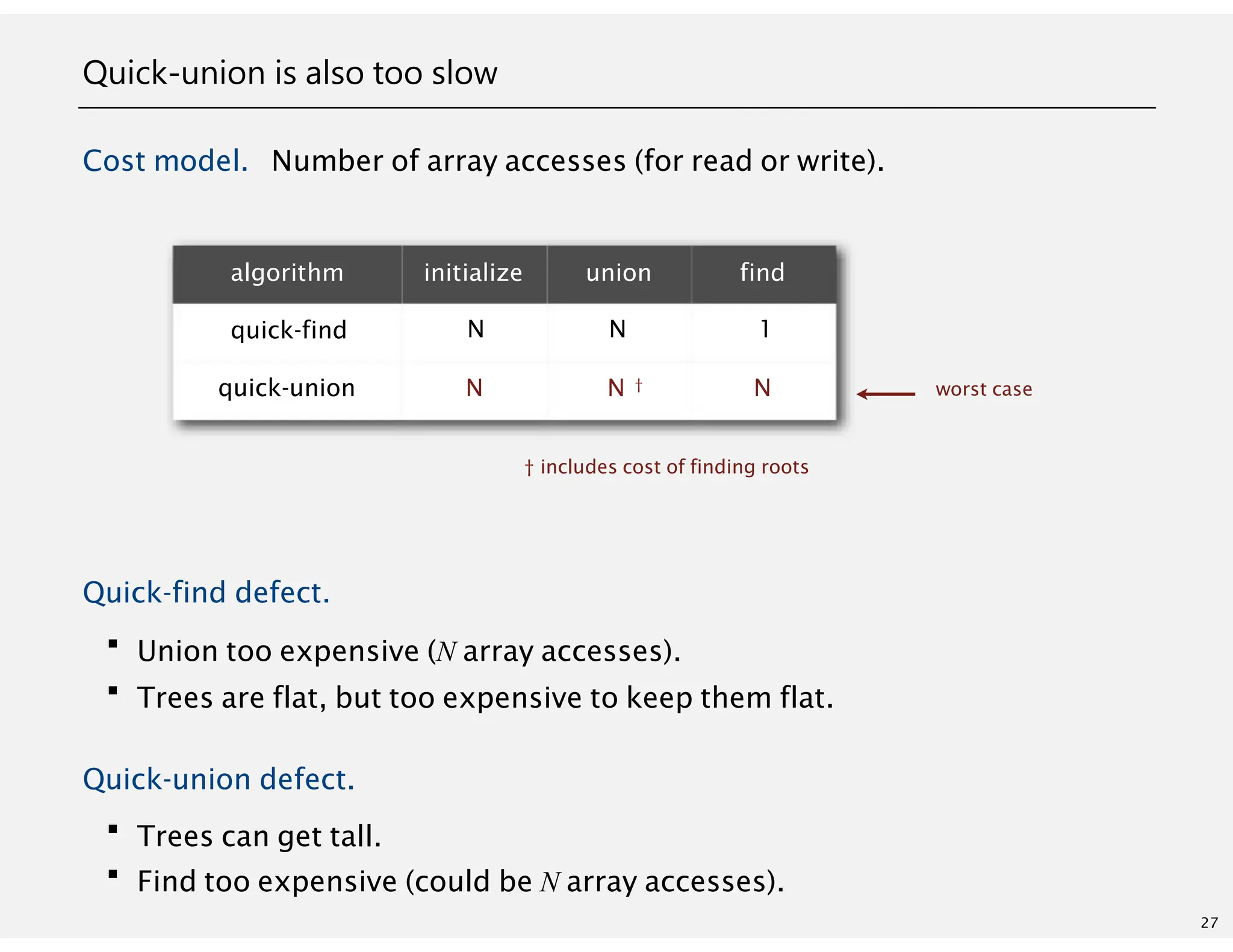- The document discusses reasons for studying algorithms and their broad impacts.
- Key reasons include solving hard problems, intellectual stimulation, becoming a proficient programmer, unlocking secrets of life and the universe, and fun.
- Algorithms have roots in ancient times but new opportunities in the modern era with computers and large data. They allow addressing problems that could not otherwise be solved.

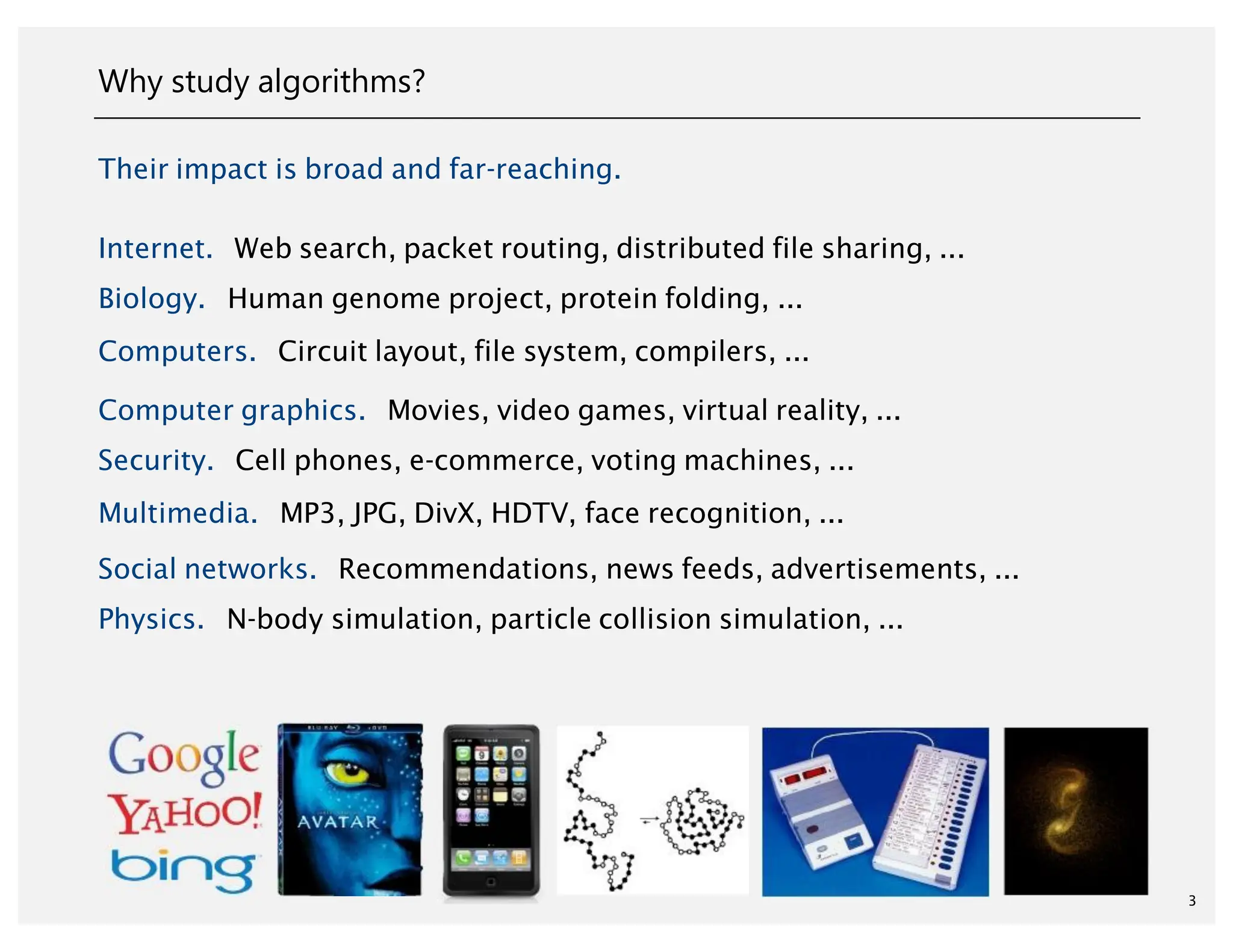

![5
To solve problems that could not otherwise be addressed.
Ex. Network connectivity. [stay tuned]
Why study algorithms?](https://image.slidesharecdn.com/lecture1slides-introduction-240213065844-fa0916ce/75/Lecture-1-Slides-Introduction-to-algorithms-pdf-4-2048.jpg)
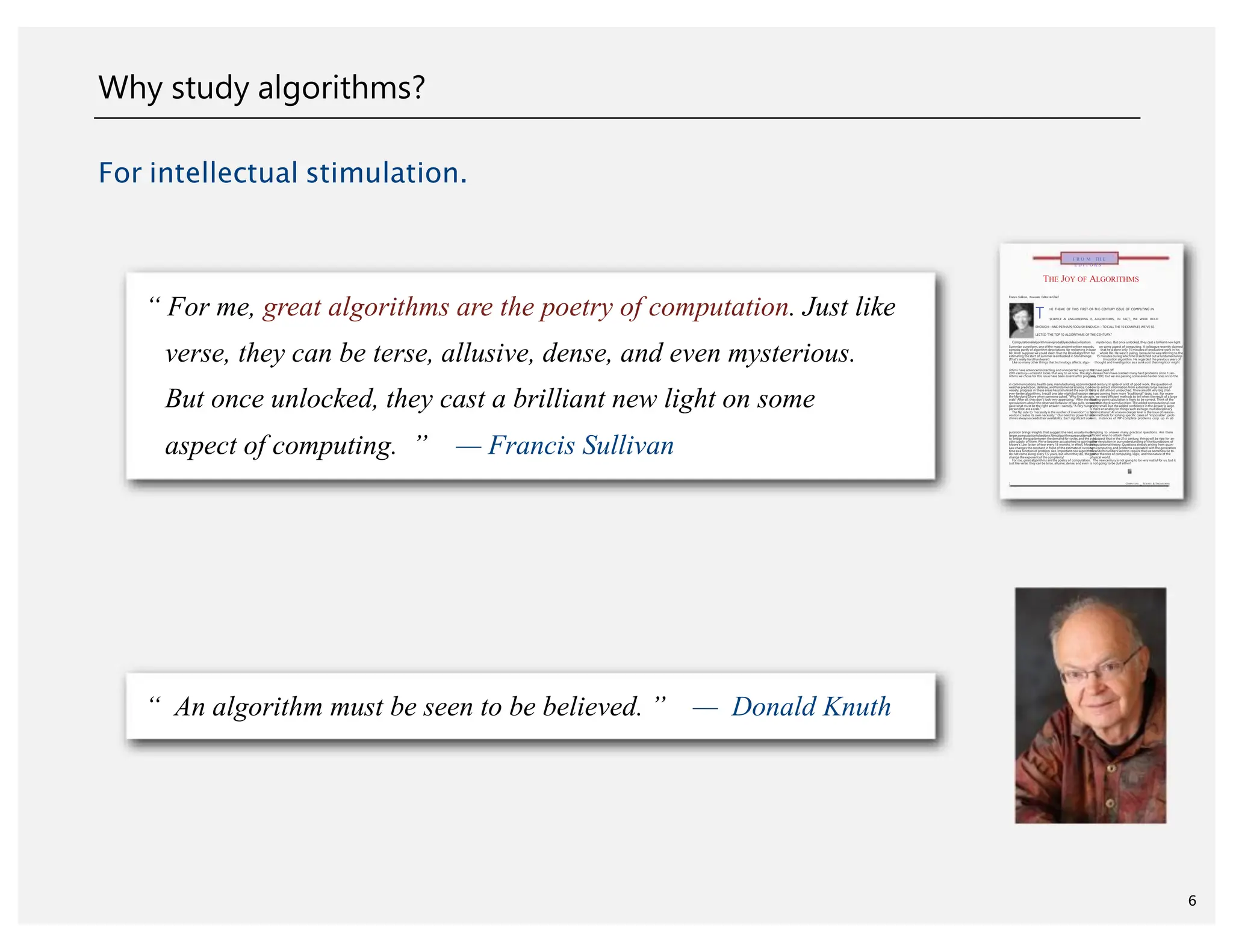
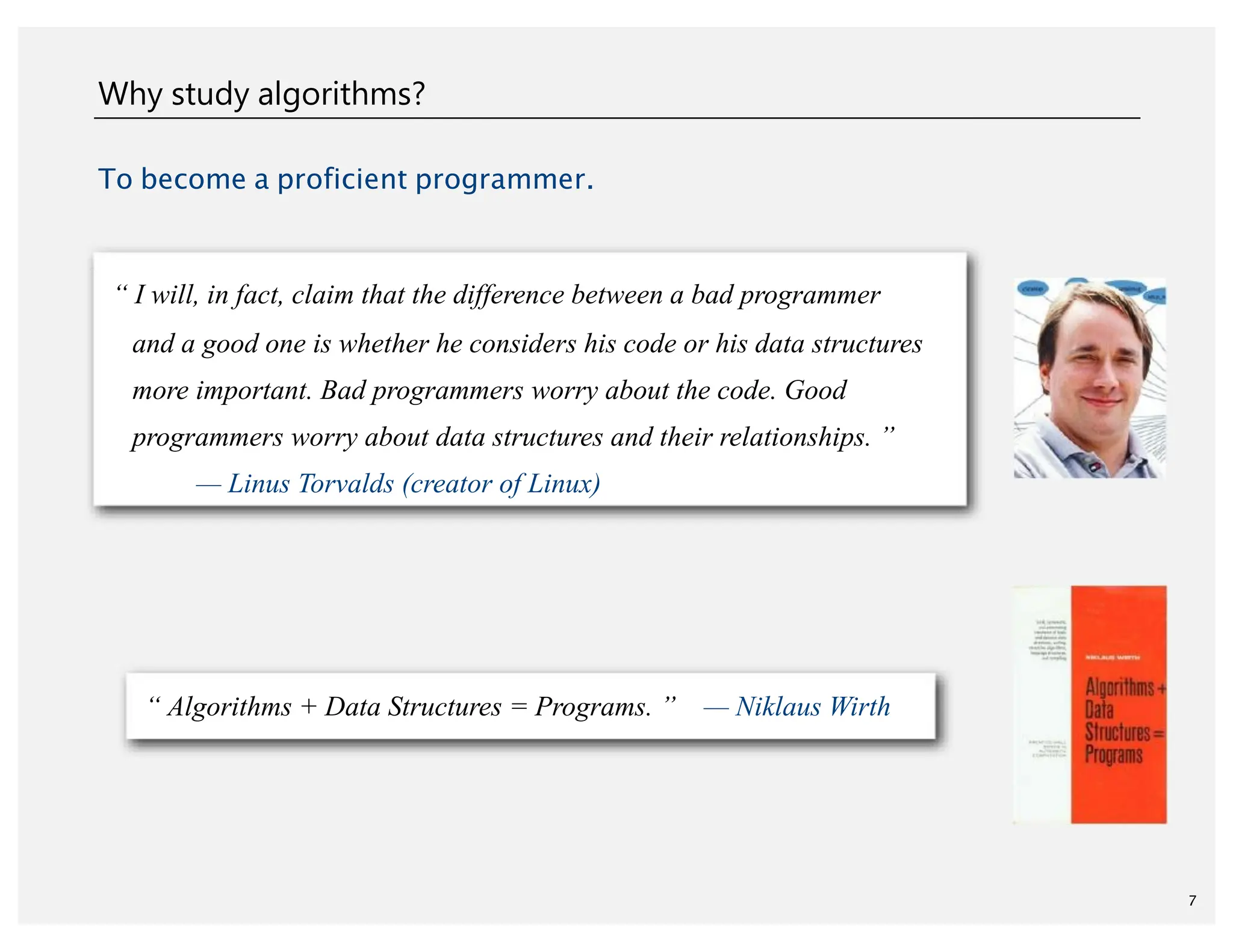
![𝐸 = 𝑚𝑐2
𝐹 = 𝑚𝑎
F = Gm1m2
r2
Why study algorithms?
They may unlock the secrets of life and of the universe.
Computational models are replacing math models in scientific inquiry.
“ Algorithms: a common language for nature, human, and computer. ” — Avi Wigderson
8
for (double t = 0.0; true; t = t + dt)
for (int i = 0; i < N; i++)
{
bodies[i].resetForce();
for (int j = 0; j < N; j++)
if (i != j)
bodies[i].addForce(bodies[j]);
21st century science
(algorithm based)
}](https://image.slidesharecdn.com/lecture1slides-introduction-240213065844-fa0916ce/75/Lecture-1-Slides-Introduction-to-algorithms-pdf-7-2048.jpg)
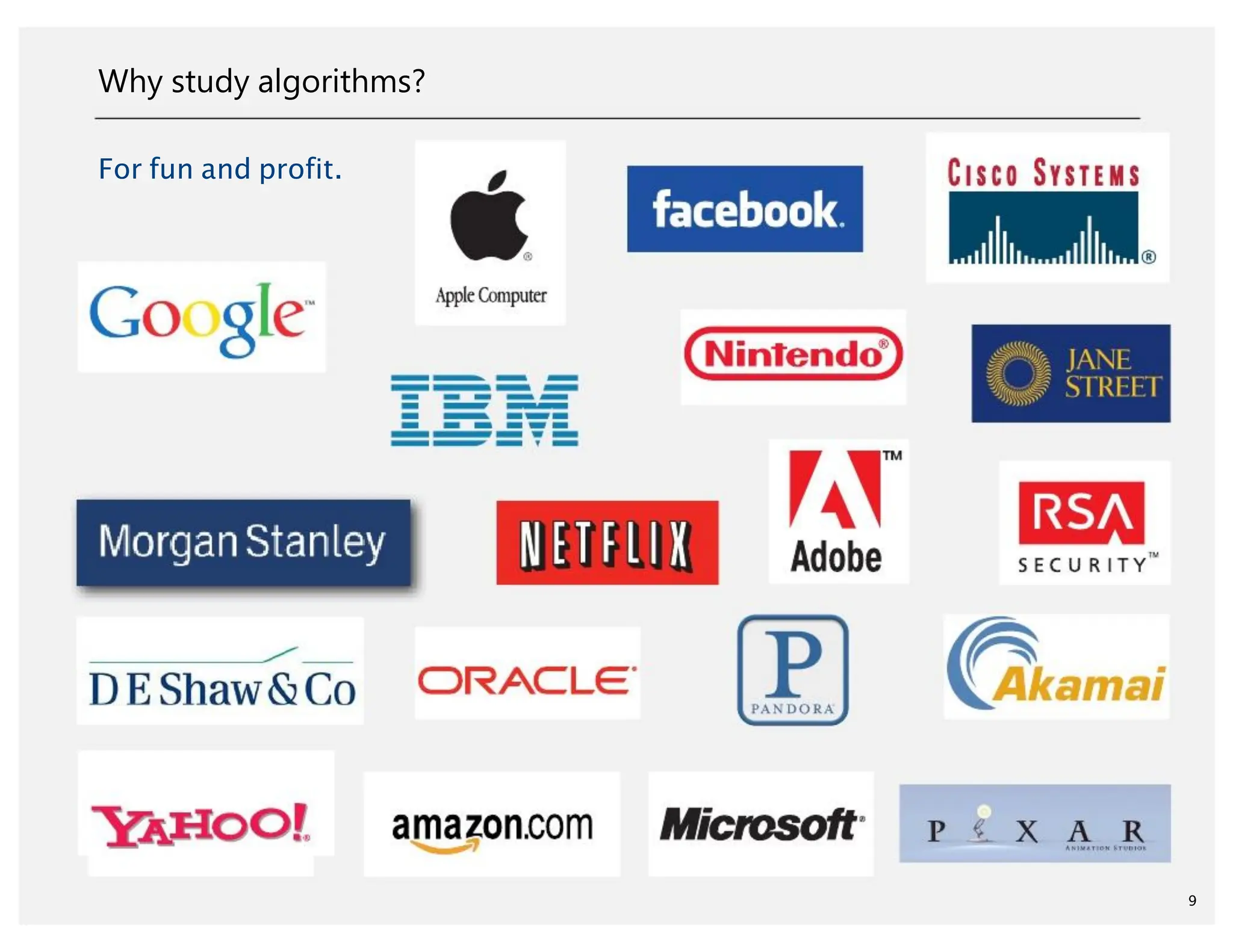

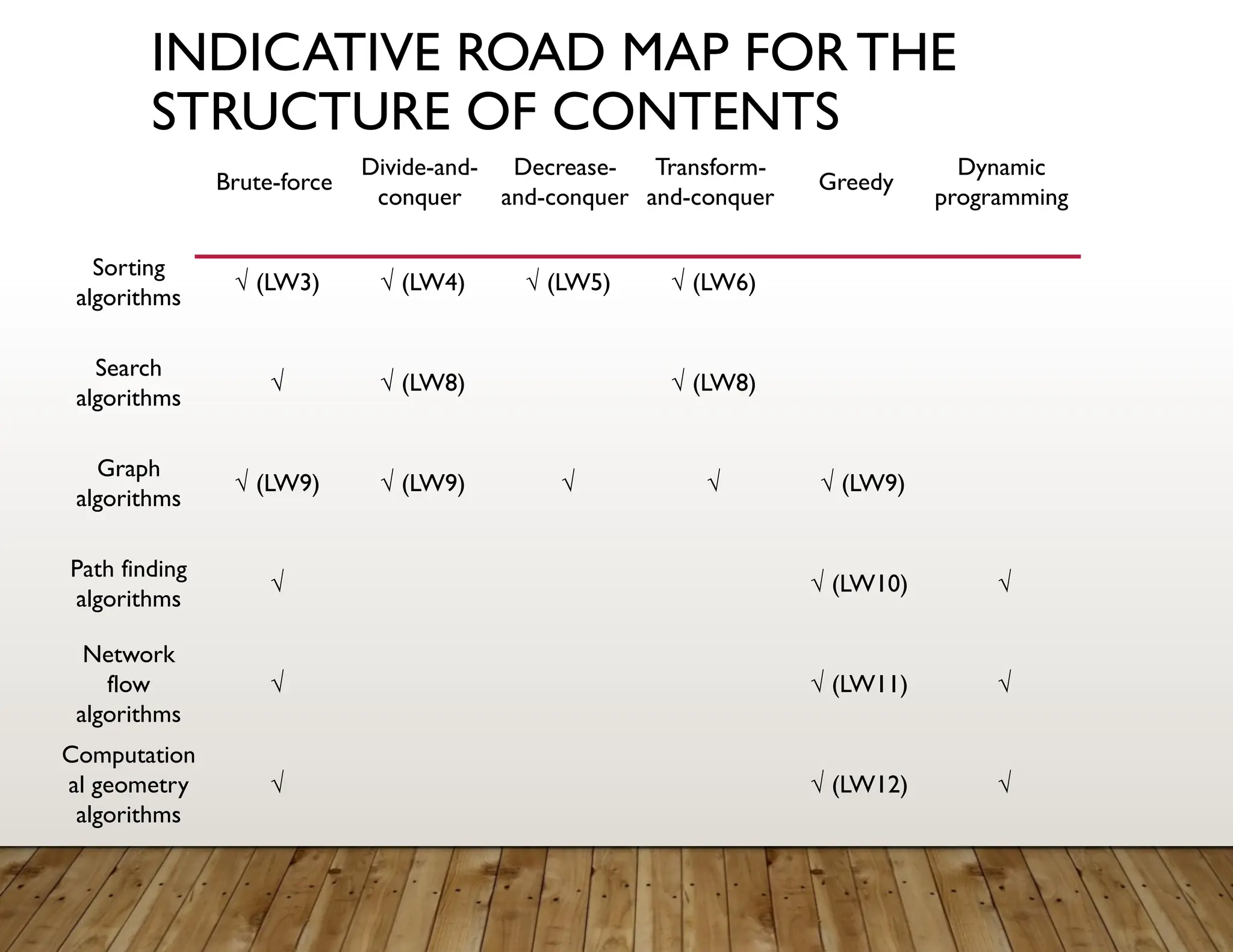
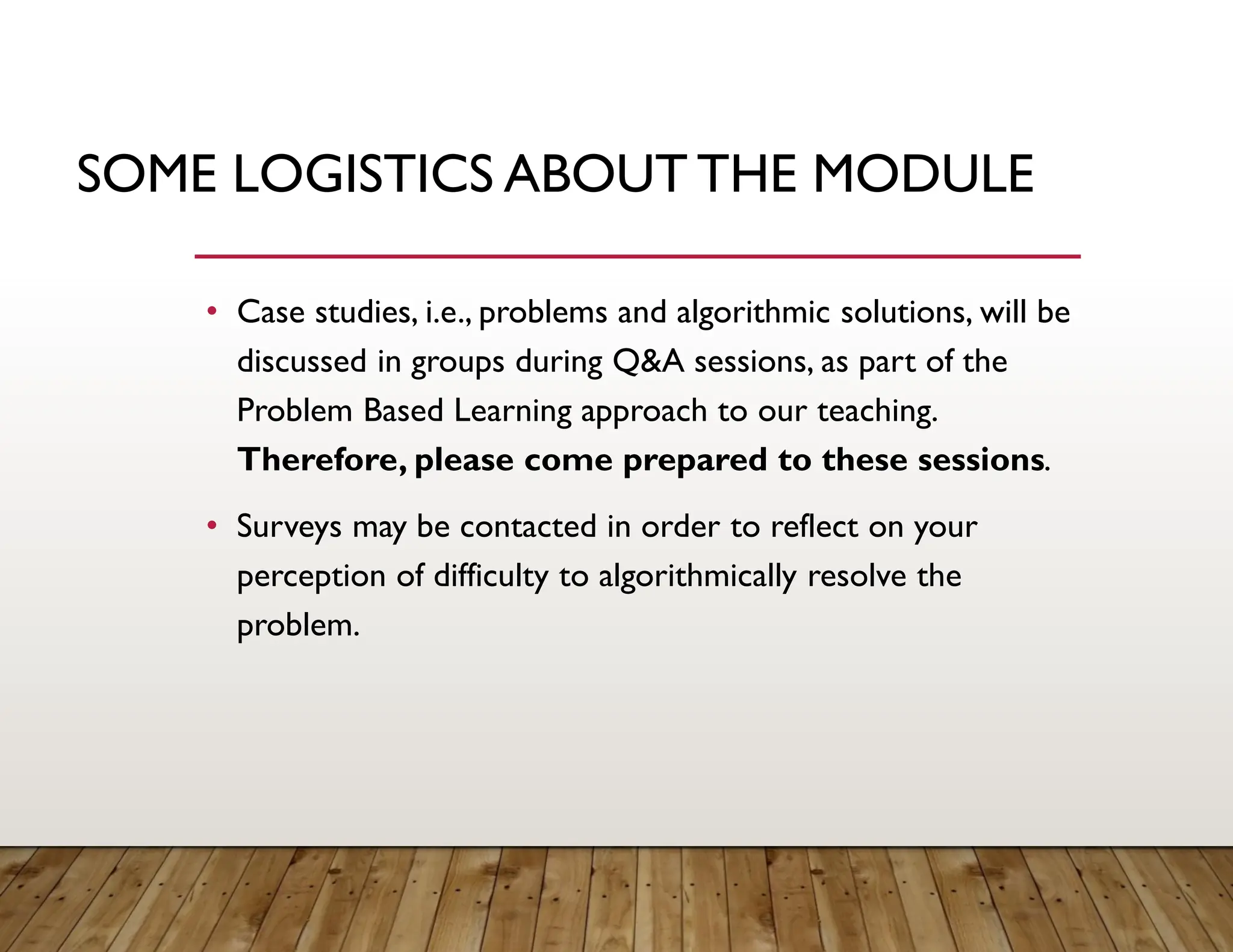
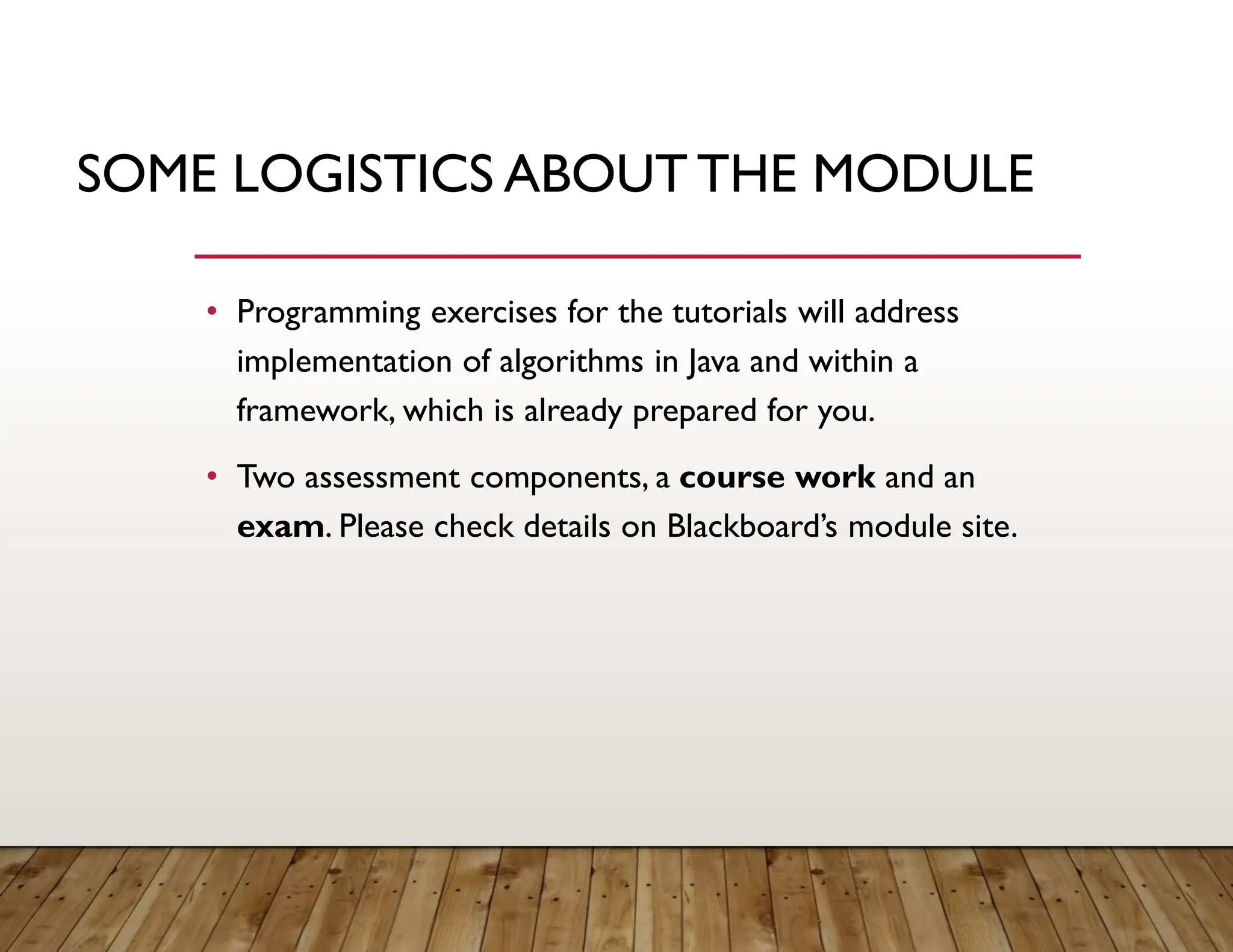
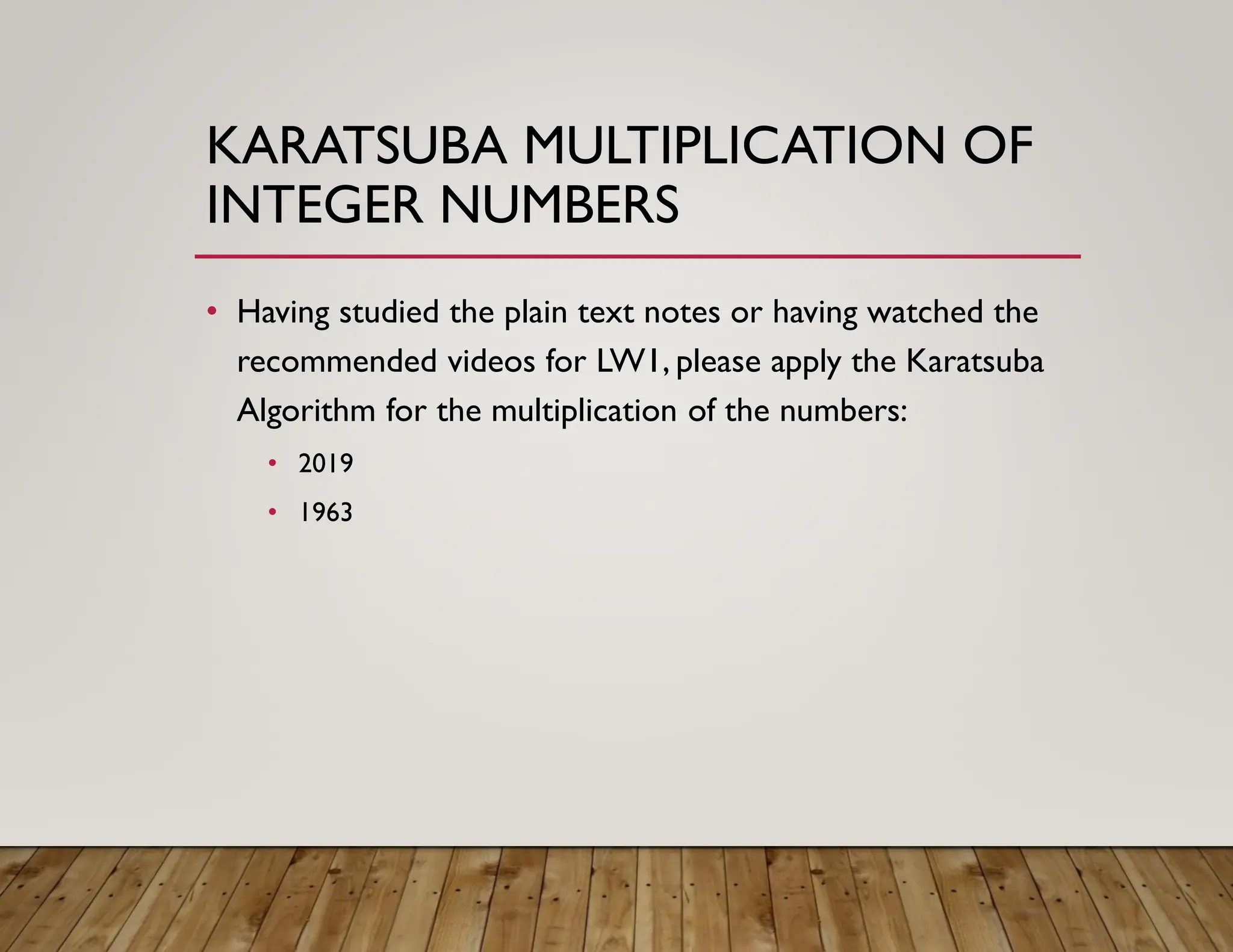
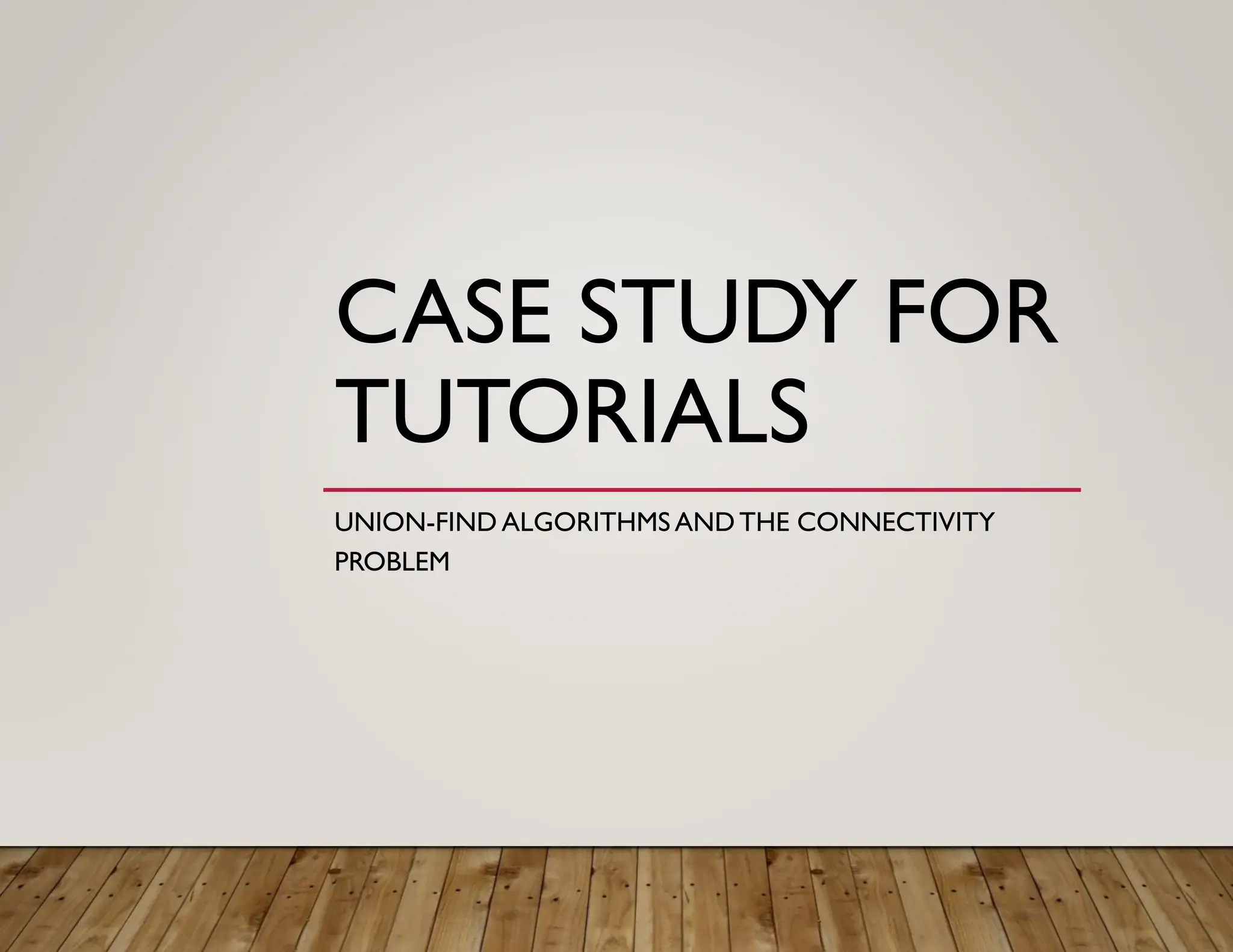
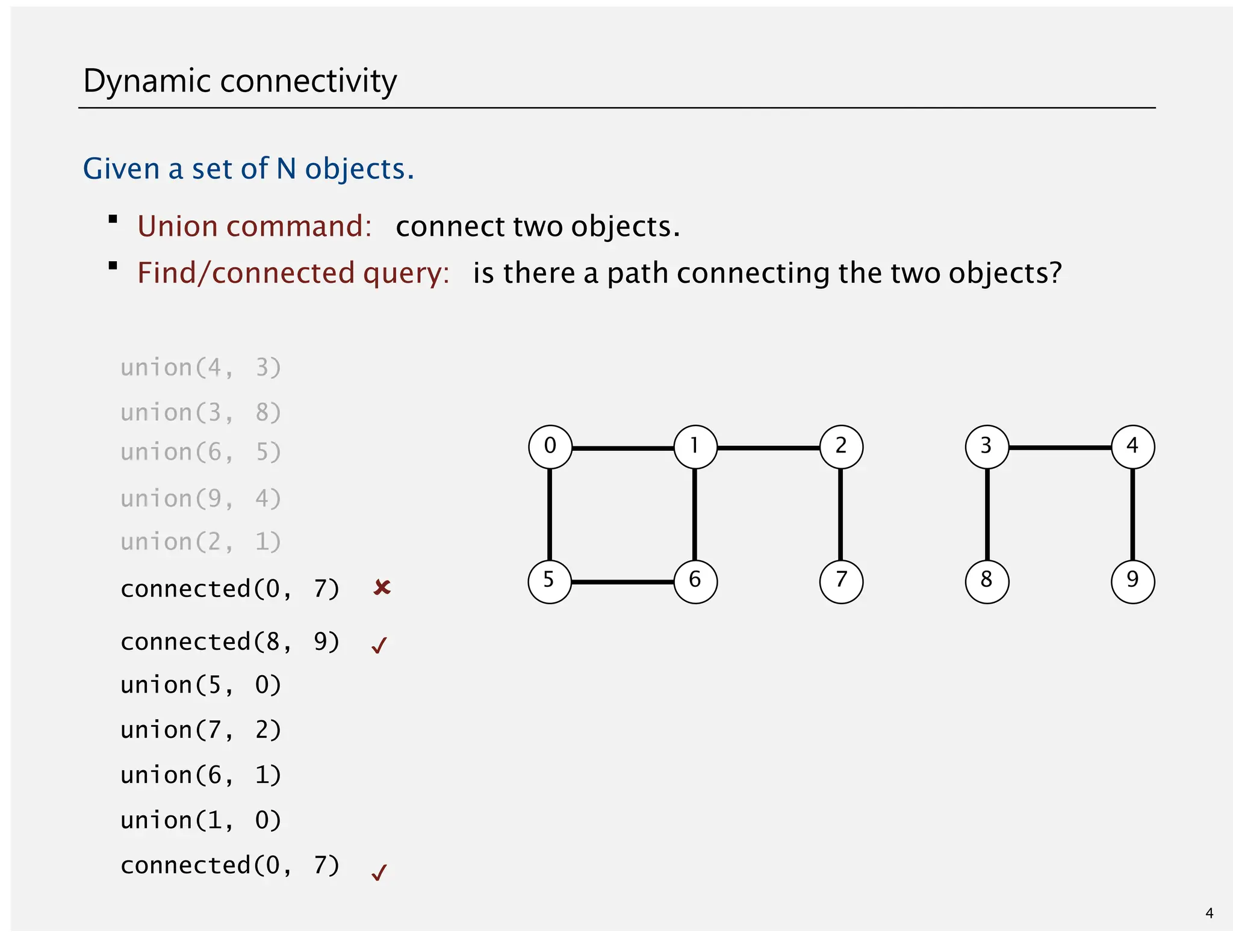
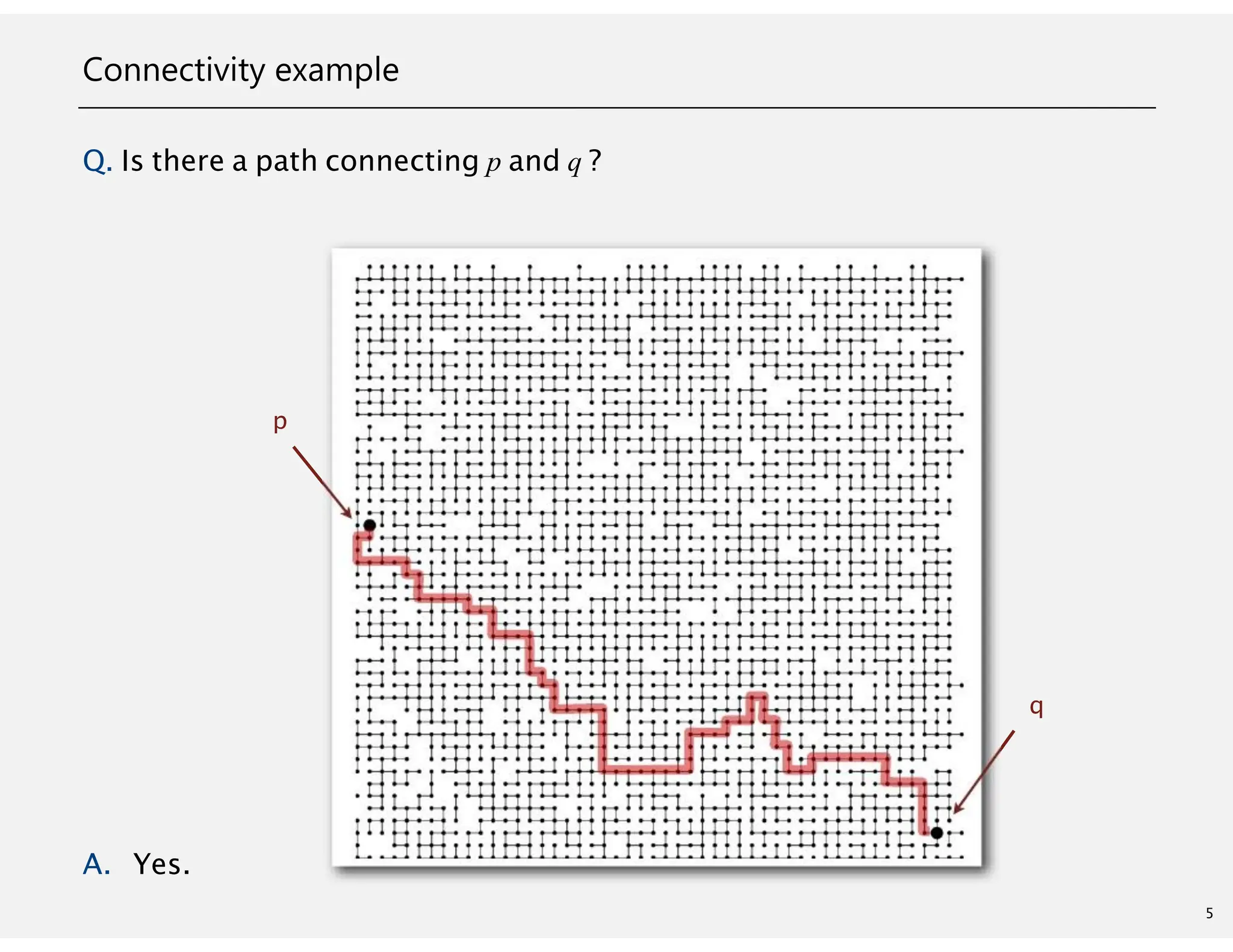
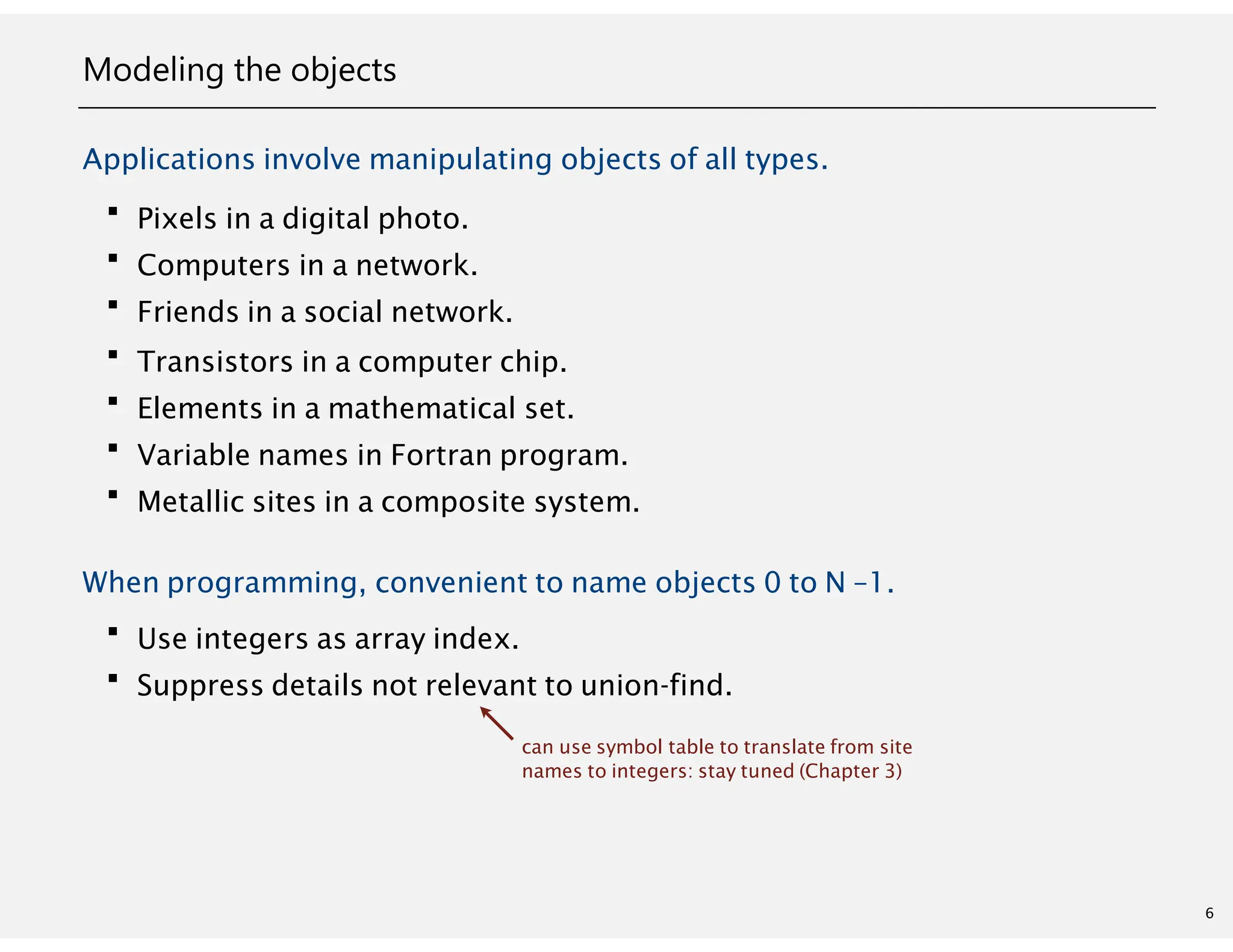
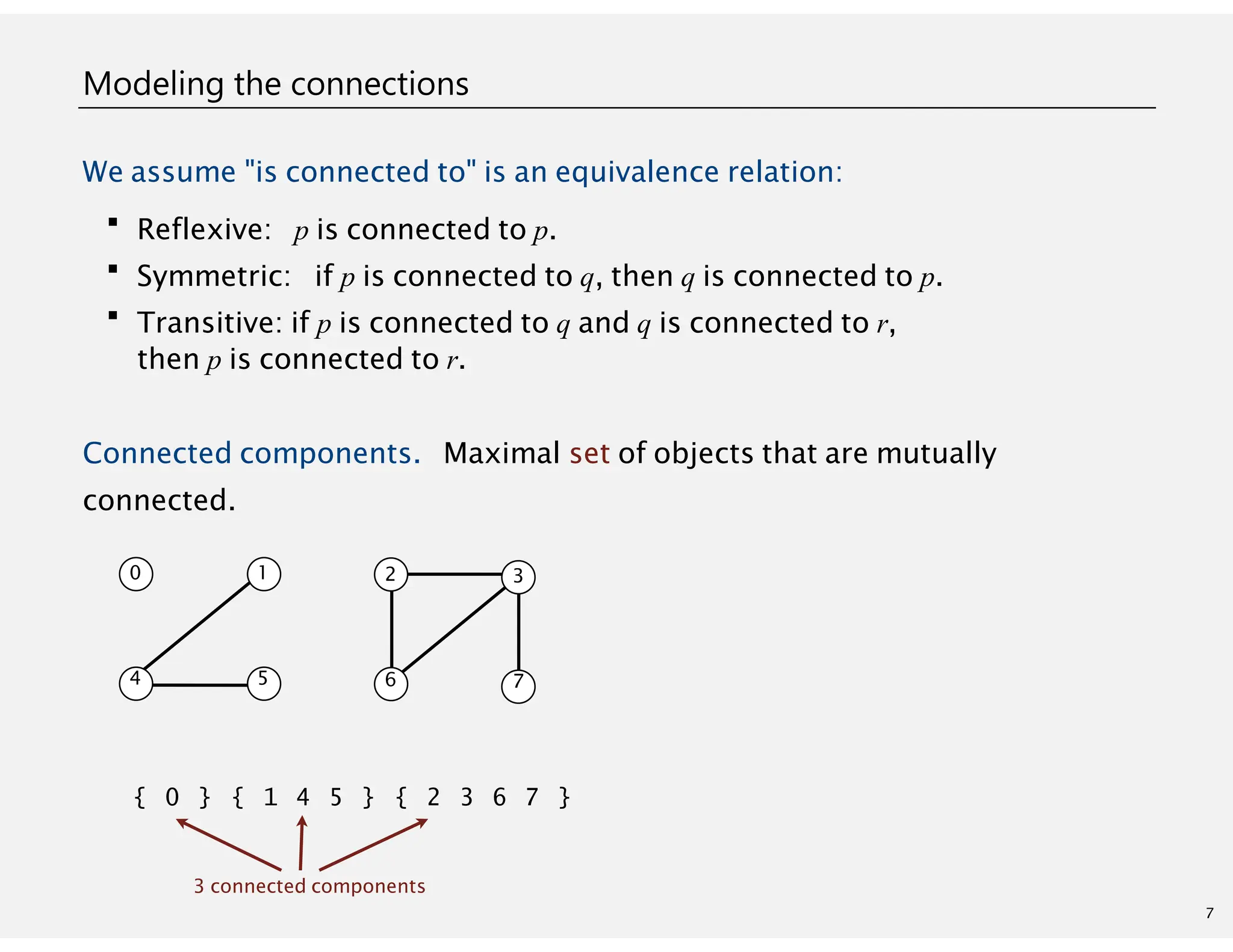

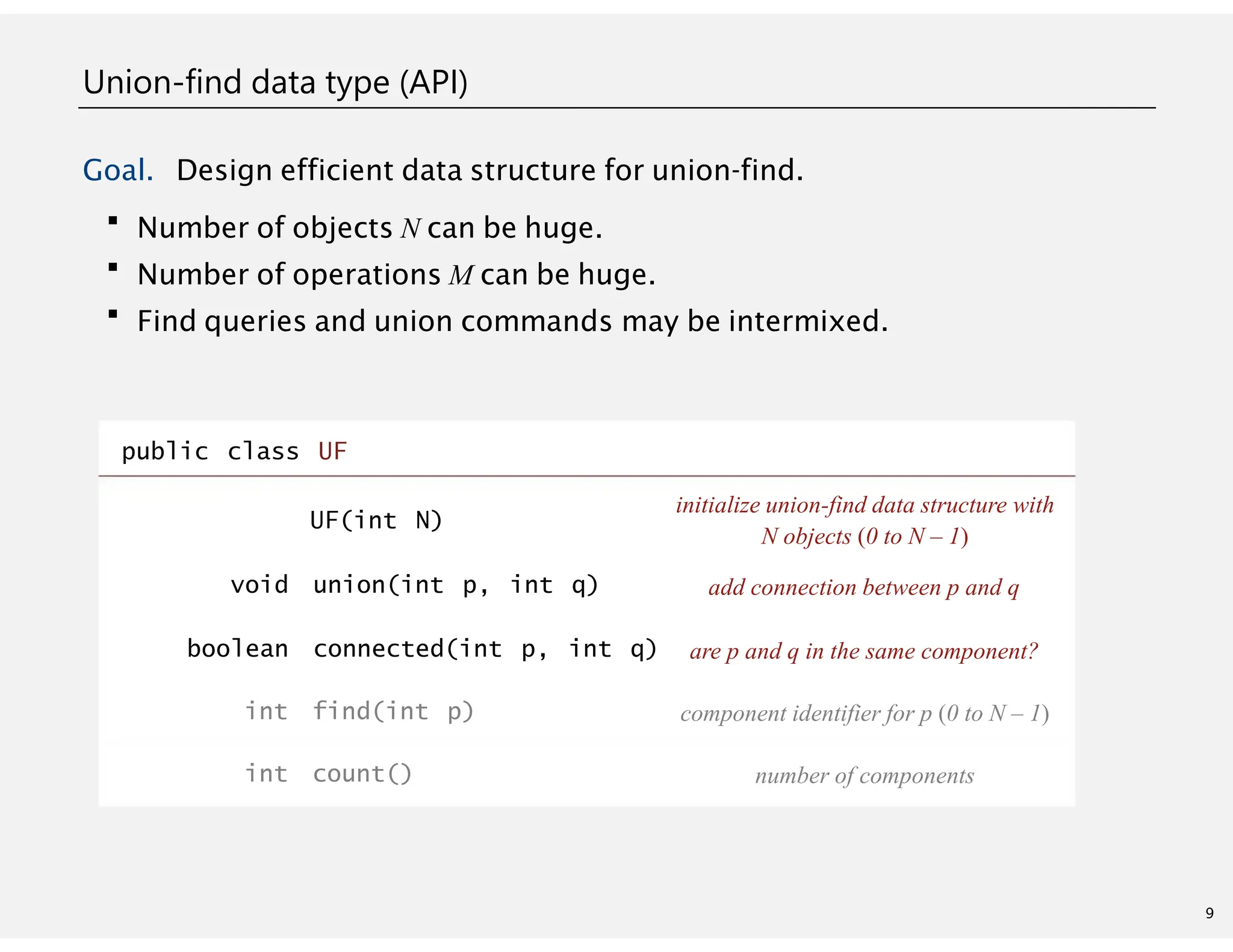
![Dynamic-connectivity client
・Read in number of objects N from standard input.
・Repeat:
– read in pair of integers from standard input
– if they are not yet connected, connect them and print out pair
public static void main(String[] args)
{
int N = StdIn.readInt();
UF uf = new UF(N);
while (!StdIn.isEmpty())
{
int p = StdIn.readInt();
int q = StdIn.readInt();
if (!uf.connected(p, q))
{
uf.union(p, q);
StdOut.println(p + " " + q);
}
}
}
10
% more tinyUF.txt
10
4 3
3 8
6 5
9 4
2 1
8 9
5 0
7 2
6 1
1 0
6 7](https://image.slidesharecdn.com/lecture1slides-introduction-240213065844-fa0916ce/75/Lecture-1-Slides-Introduction-to-algorithms-pdf-21-2048.jpg)
![13
0, 5 and 6 are connected
1, 2, and 7 are connected
3, 4, 8, and 9 are connected
0
5
1
6
2
7
3
8
4
9
0 1
0 1
1 8
2 3
8 0
4 5
0 1
6 7
8 8
8 9
id[]
Quick-find [eager approach]
Data structure.
if and only if
・Integer array id[] of size N.
・Interpretation: p and q are connected iff they have the same id.](https://image.slidesharecdn.com/lecture1slides-introduction-240213065844-fa0916ce/75/Lecture-1-Slides-Introduction-to-algorithms-pdf-22-2048.jpg)
![Find. Check if p and q have the same id.
after union of 6 and 1
problem: many values can change
14
Quick-find [eager approach]
Data structure.
・Integer array id[] of size N.
・Interpretation: p and q are connected iff they have the same id.
id[6] = 0; id[1] = 1
6 and 1 are not connected
Union. To merge components containing p and q, change all entries
whose id equals id[p] to id[q].
0 1
0 1
1 8
2 3
8 0
4 5
0 1
6 7
8 8
8 9
1 1
0 1
1 8
2 3
8 1
4 5
1 1
6 7
8 8
8 9
id[]
id[]](https://image.slidesharecdn.com/lecture1slides-introduction-240213065844-fa0916ce/75/Lecture-1-Slides-Introduction-to-algorithms-pdf-23-2048.jpg)
![15
Quick-find demo
0
5
1
6
2
7
3
8
4
9
0 1
0 1
2 3
2 3
4 5
4 5
6 7
6 7
8 9
8 9
id[]](https://image.slidesharecdn.com/lecture1slides-introduction-240213065844-fa0916ce/75/Lecture-1-Slides-Introduction-to-algorithms-pdf-24-2048.jpg)
![Quick-find demo
0
5
1
6
2
7
3
8
4
9
1 1
0 1
1 8
2 3
8 1
4 5
1 1
6 7
8 8
8 9
id[]](https://image.slidesharecdn.com/lecture1slides-introduction-240213065844-fa0916ce/75/Lecture-1-Slides-Introduction-to-algorithms-pdf-25-2048.jpg)
![public boolean connected(int p, int q)
{ }
public
{
void union(int p, int q)
}
}
17
Quick-find: Java implementation – Your first exercise
public class QuickFindUF
{
private int[] id;
public QuickFindUF(int N)
{
set id of each object to itself
(N array accesses)
change all entries with id[p] to id[q]
(at most 2N + 2 array accesses)
}
check whether p and q
are in the same component
(2 array accesses)](https://image.slidesharecdn.com/lecture1slides-introduction-240213065844-fa0916ce/75/Lecture-1-Slides-Introduction-to-algorithms-pdf-26-2048.jpg)
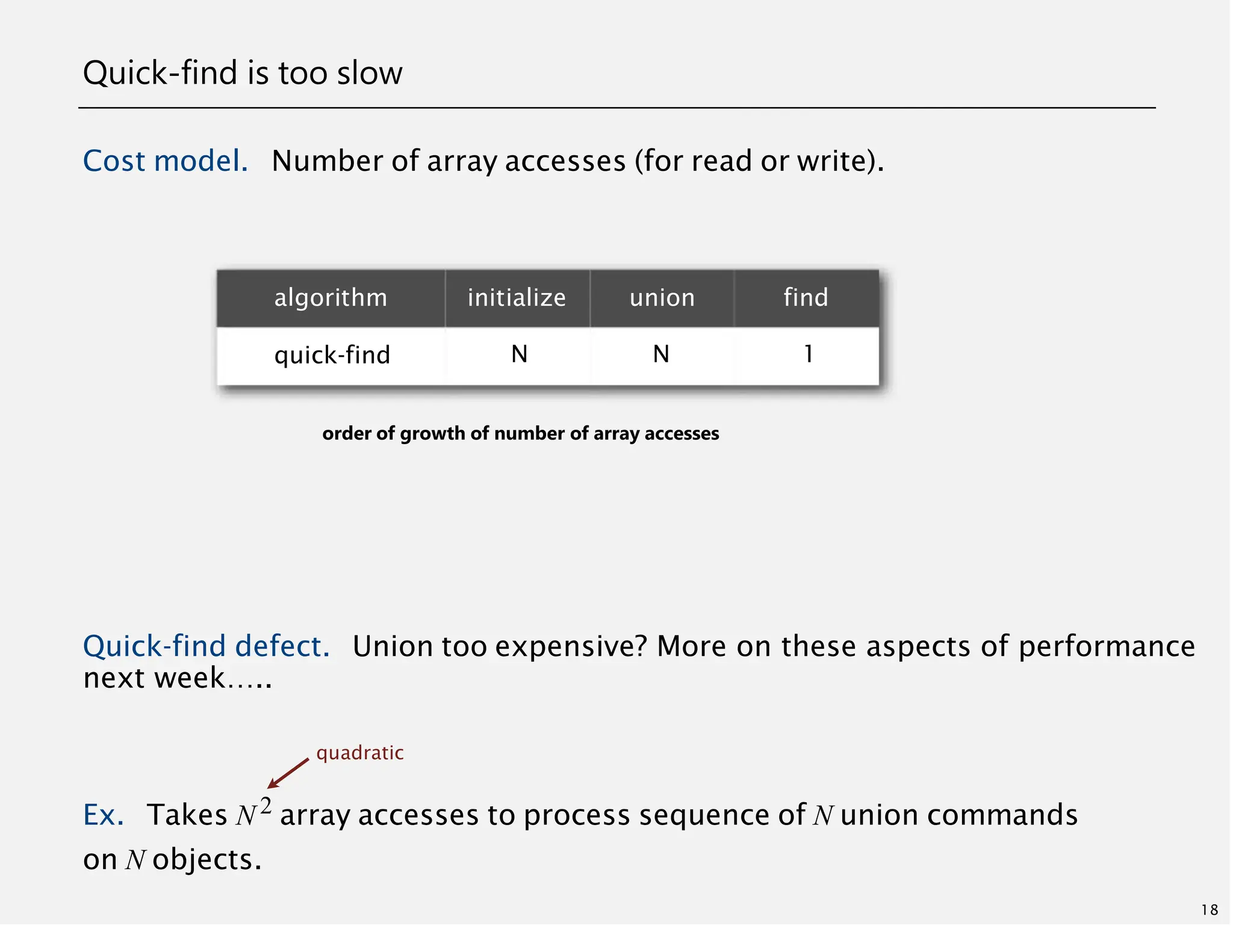
![・Integer array id[] of size N.
・Interpretation: id[i] is parent of i.
・Root of i is id[id[id[...id[i]...]]].
Quick-union [lazy approach]
Data structure.
0 1
0 1
9 4
2 3
9 6
4 5
6 7
6 7
8 9
8 9
id[]
3
root of 3 is 9
22
5
4
7
keep going until it doesn’t change
(algorithm ensures no cycles)
0 1 9 6 8
2](https://image.slidesharecdn.com/lecture1slides-introduction-240213065844-fa0916ce/75/Lecture-1-Slides-Introduction-to-algorithms-pdf-28-2048.jpg)
![・Integer array id[] of size N.
・Interpretation: id[i] is parent of i.
・Root of i is id[id[id[...id[i]...]]].
Find. Check if p and q have the same root.
set the id of p's root to the id of q's root.
23
Quick-union [lazy approach]
Data structure.
0 1
0 1
9 4
2 3
9 6
4 5
6 7
6 7
8 9
8 9
id[]
3
4
7
0 1
9
6 8
2
only one value changes
p
q
0 1
0 1
9 4
2 3
9 6
4 5
6 7
6 7
8 6
8 9
id[]
5
3
5
4
7
0 1 9 6 8
2
p
q
root of 3 is 9
root of 5 is 6
3 and 5 are not connected
Union. To merge components containing p and q,](https://image.slidesharecdn.com/lecture1slides-introduction-240213065844-fa0916ce/75/Lecture-1-Slides-Introduction-to-algorithms-pdf-29-2048.jpg)
![24
Quick-union demo
0 1 2 3 4 5 6 7 8 9
0 1
0 1
2 3
2 3
4 5
4 5
6 7
6 7
8 9
8 9
id[]](https://image.slidesharecdn.com/lecture1slides-introduction-240213065844-fa0916ce/75/Lecture-1-Slides-Introduction-to-algorithms-pdf-30-2048.jpg)
![0
1
2
5
6
7
3
4
Quick-union demo
8
9
1 8
0 1
1 8
2 3
3 0
4 5
5 1
6 7
8 8
8 9
id[]](https://image.slidesharecdn.com/lecture1slides-introduction-240213065844-fa0916ce/75/Lecture-1-Slides-Introduction-to-algorithms-pdf-31-2048.jpg)
![Quick-union: Java implementation – Your second exercise
public class QuickUnionUF
{
private int[] id;
public QuickUnionUF(int N)
{
}
private int root(int i)
{
}
public boolean connected(int p, int q)
{
}
public void union(int p, int q)
{
set id of each object to itself
(N array accesses)
chase parent pointers until reach root
(depth of i array accesses)
check if p and q have same root
(depth of p and q array accesses)
change root of p to point to root of q
(depth of p and q array accesses)
}
}
26](https://image.slidesharecdn.com/lecture1slides-introduction-240213065844-fa0916ce/75/Lecture-1-Slides-Introduction-to-algorithms-pdf-32-2048.jpg)
